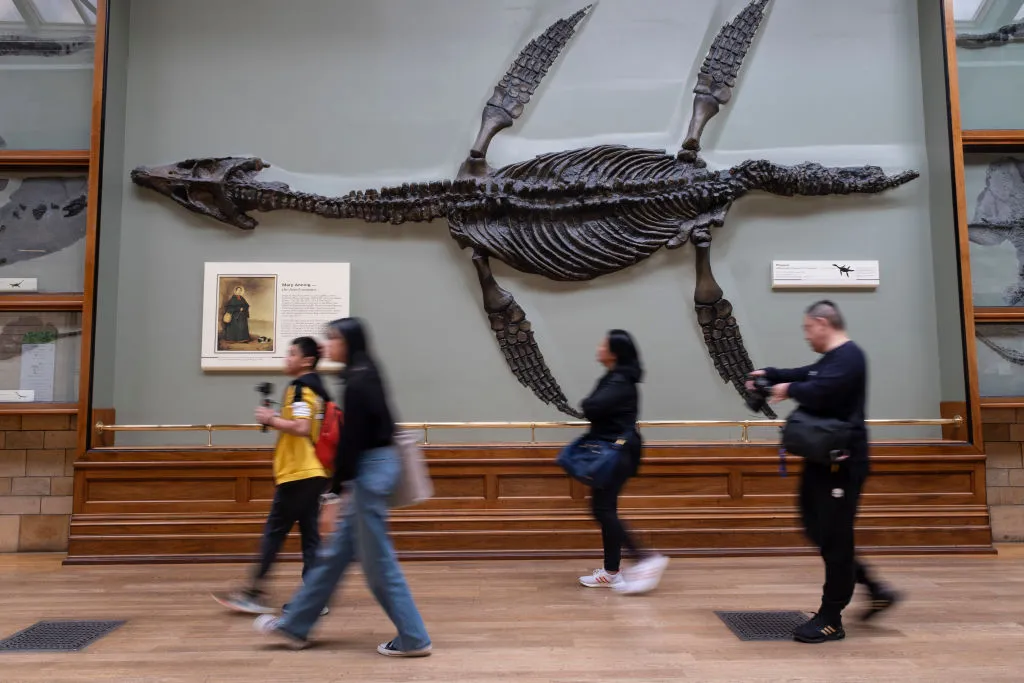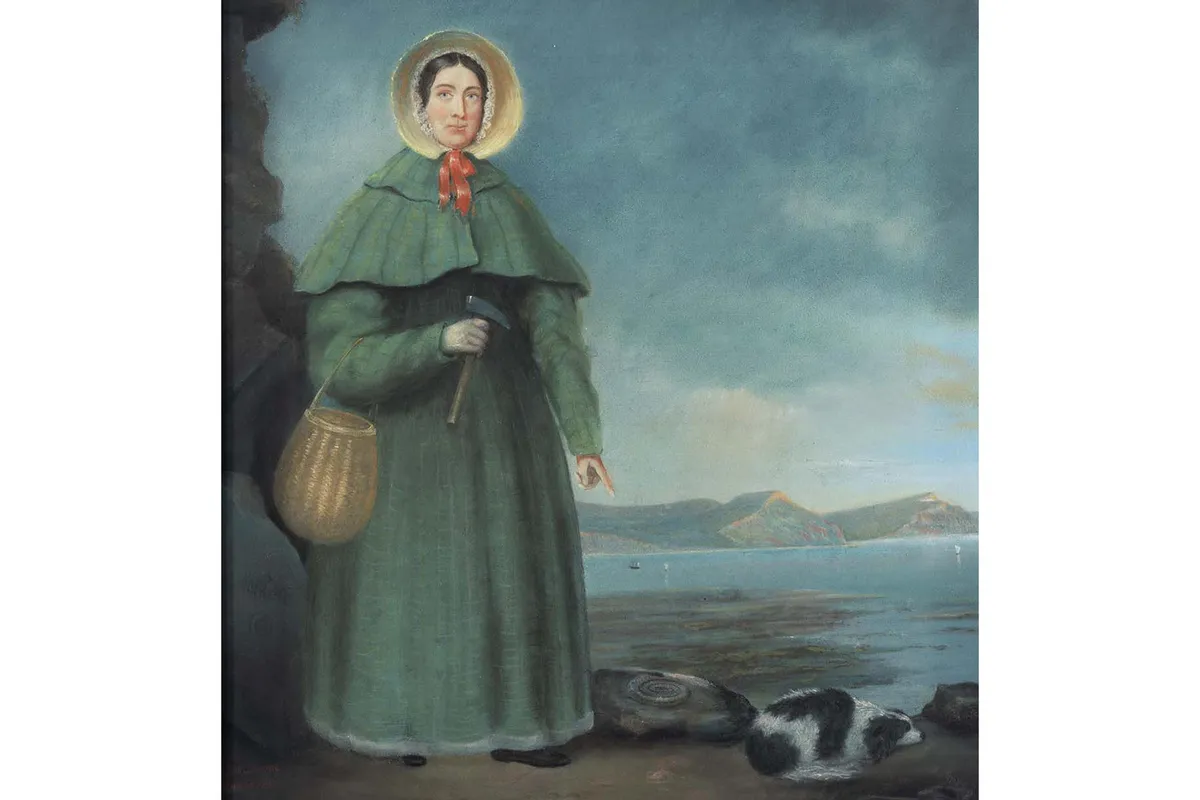Ancient reptile skeletons are the hallmark of any natural history museum gallery. Devoid of flesh or skin that rotted away or was eaten by scavengers, these fossil specimens continue to inspire and provoke ideas about how life existed on Earth hundreds of millions of years ago.
Whilst most of us are familiar with these types of fossils, there are also plenty of other types of fossils that help scientists to understand the prehistoric life that once lived on our planet.
This guide covers the different types of fossils and how they are preserved, where to look for fossils in the UK, and whether it’s ok to keep a fossil you find.
What are fossils – and are they different from bones?
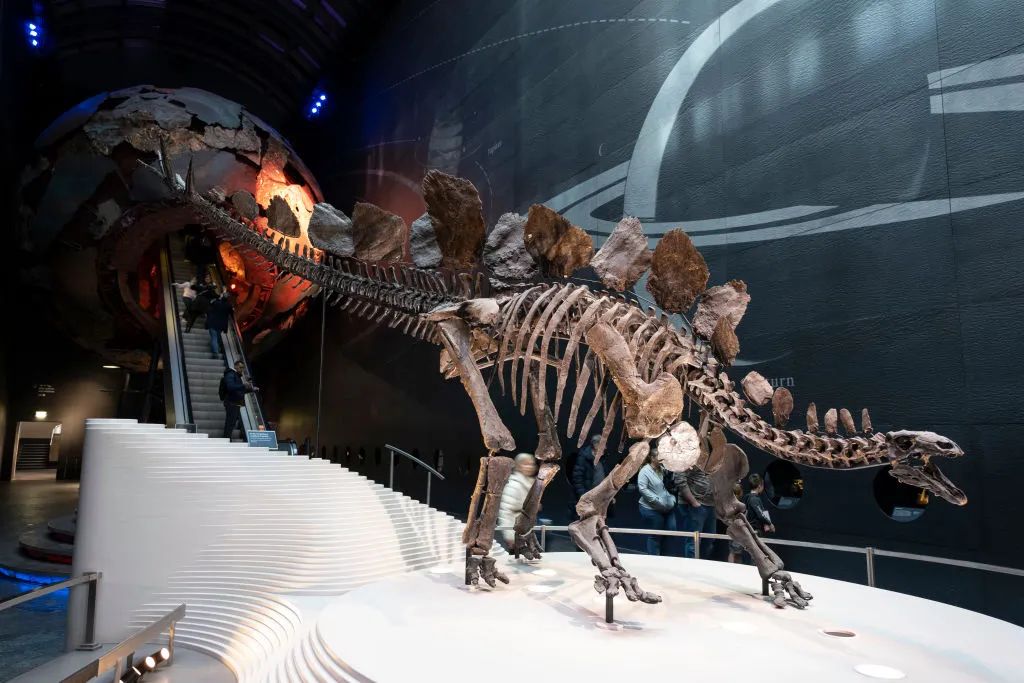
When you see dinosaur skeletons in a museum, you’re not actually looking at their bones but their geologically based replacements. Bones are made from a composite of organic components, such as collagen and fats, and inorganic minerals such as calcium.
After an animal dies, the organic parts of the bone break down over millions of years and leave only the fragile and porous inorganic components, which maintain the shape of the original bones. Water in the sediment surrounding the animal seeps into its bones, carrying with it minerals such as calcium carbonate and iron.
These are deposited into the bones’ microscopic pores, making them more and more rocklike while the physical structure remains the same.
Q&A was answered by Professor Ben Garrod
What is a trace fossil?
Most fossils are considered to be ‘body fossils’, such as fossilised bones or plants, however ‘trace fossils’ also exist. These are evidence of an organism in sediment, such as coprolites (dung), footprints, burrows or feeding marks.
How are dinosaur footprints preserved?
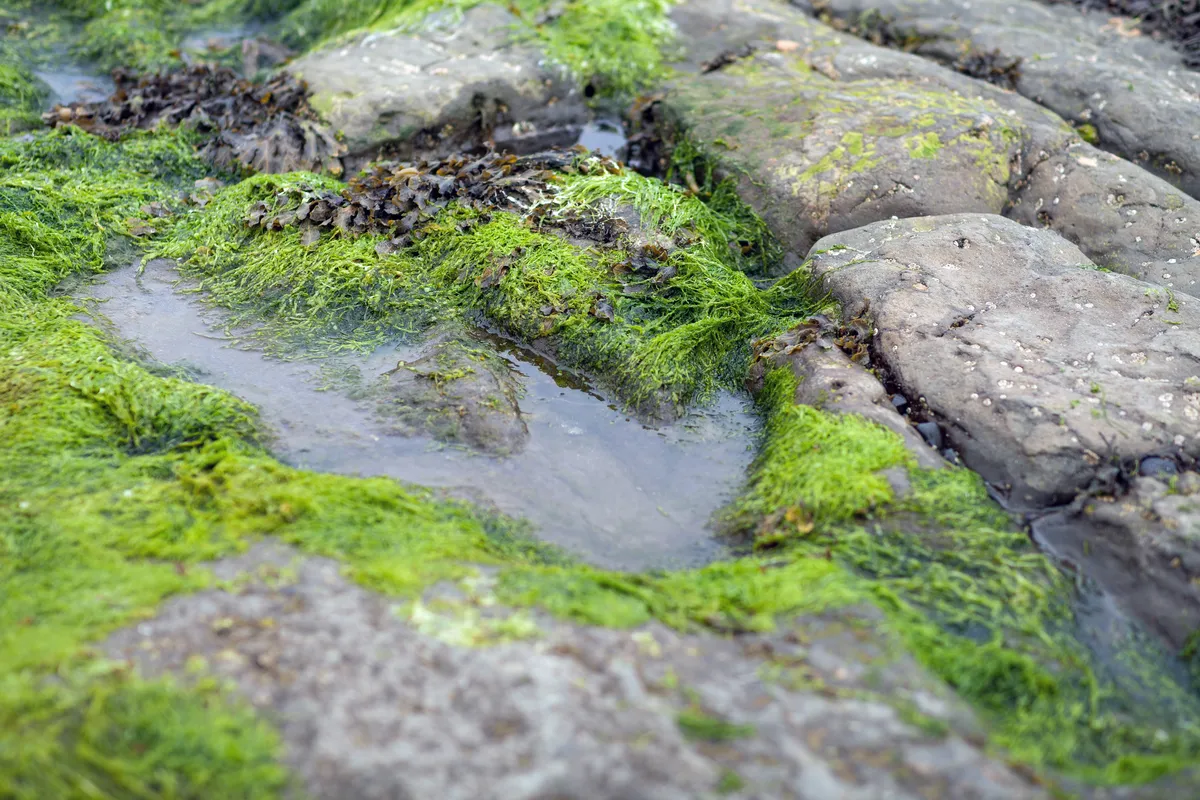
Imagine walking across a muddy field in a pair of wellies, your feet squelching with each step you take. If the depressions left behind were quickly filled in with sand or small pebbles, your footprints could become fossils of the future.
This is what happened to the trails of footprints that dinosaurs left behind on the muddy surfaces of lagoons and swamps. Each layer of sediment deposited on top of the footprint compressed into layers of sedimentary rock, preserving this moment of contact forever.
Known as trace fossils, dinosaur footprints are found in two forms; as shallow depressions on a rock surface or as footprint shaped blocks known as casts. These extraordinary fossils reveal themselves when rock layers are split apart either by quarrying or through natural erosion.
The Isle of Skye is a particularly rich location for dinosaur footprints, but natural weathering processes and mud infilling the depressions, keeps them intriguingly hidden from visitors.
What is a living fossil?
The phrase ‘living fossil’ is both widely used and widely argued over. It refers to an ‘archaic’ species that has survived for a long time, whose anatomy harks back to an early stage in the group’s evolutionary tree and has remained unchanged for much of that period.
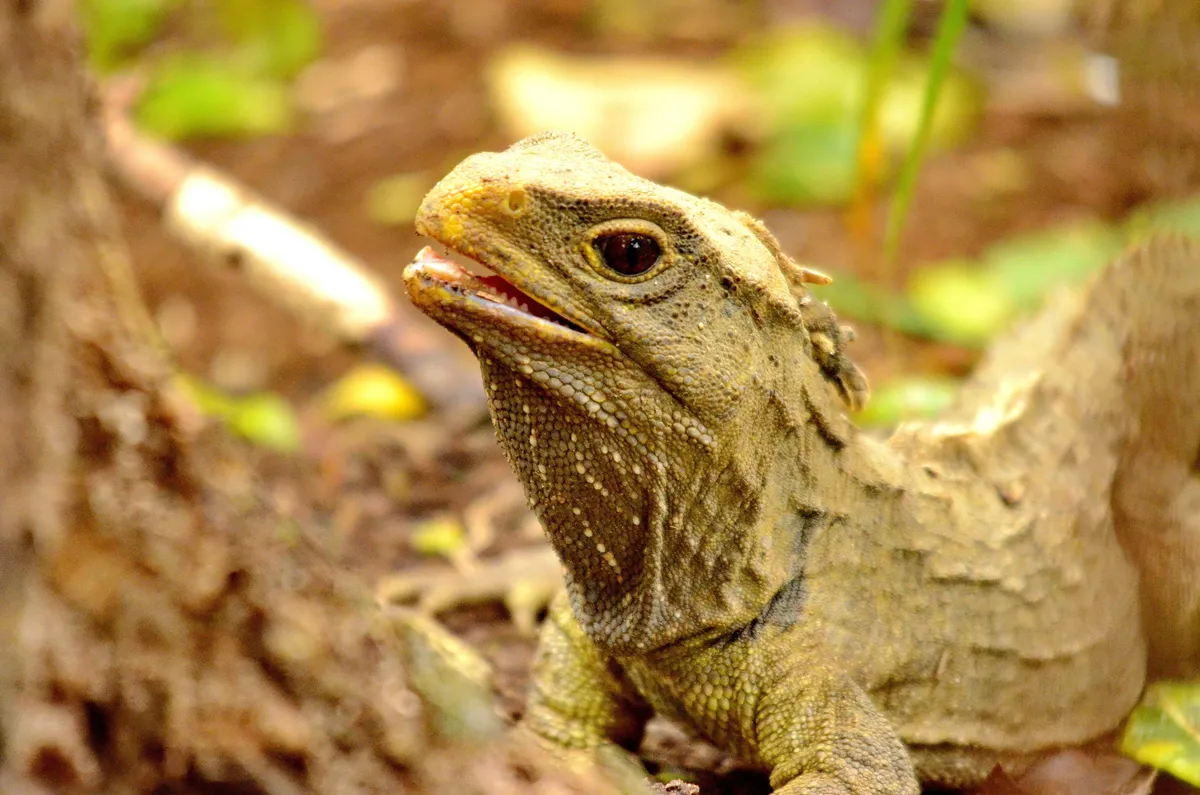
There are several species that are often referred to as living fossils, including coelacanths, horseshoe crabs, tuataras (above) and nautiloids. The tree Ginko biloba for example is the only living species of its group and dates back almost 300 million years on the fossil record. However, some species are more problematic – even okapi are considered by some as ‘living fossils’, yet have only existed for 15–20 million years.
The problem with the term ‘living fossil’ is the definition of ‘a long time’ and ‘remained unchanged’. Is a million years a long time, or does it need to be 65 million years? And many species remain largely unchanged for millions of years – even frogs have looked the same for that long – but we don’t call them ‘living fossils’.
This Q&A was answered by Professor Ben Garrod
If I find a fossil, can I keep it?
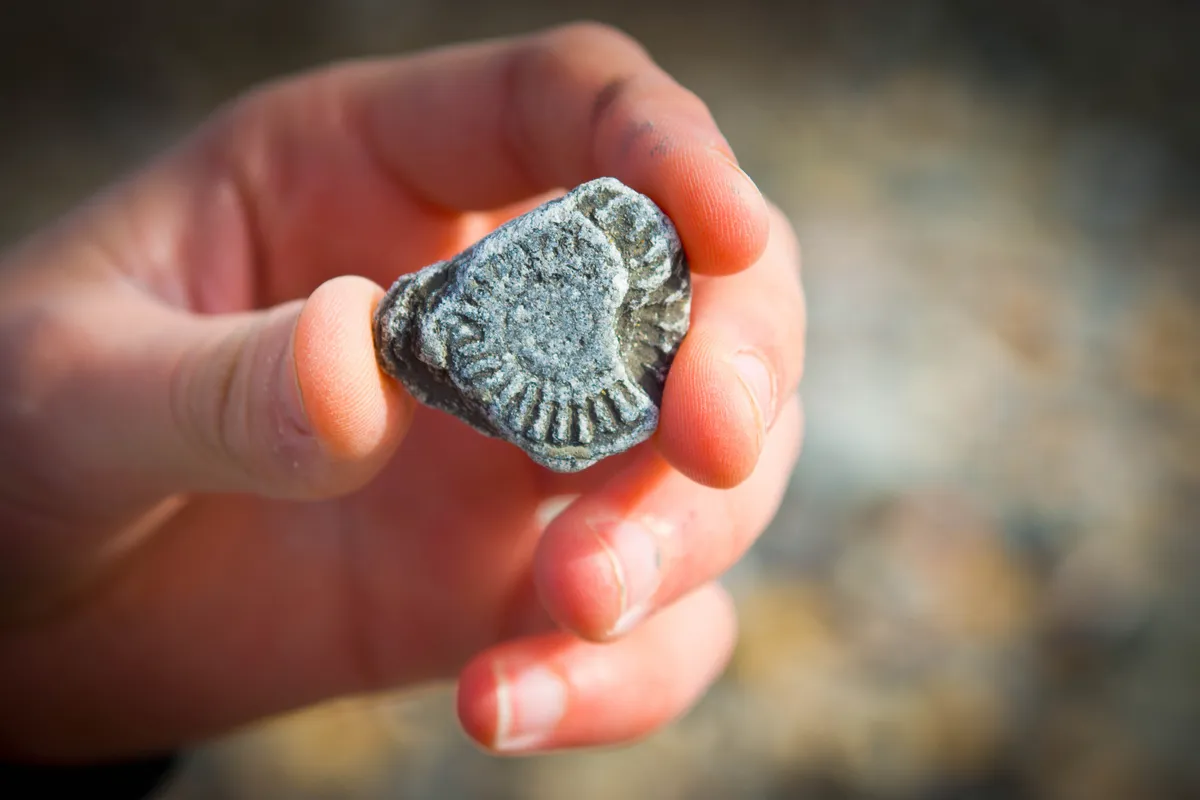
It depends on where you are searching and whether there are any restrictions in place. Charmouth on the Jurassic Coast and Runswick Bay in Yorkshire are fantastic places to go fossil hunting. As the waves erode the cliffs, they crumble away and release fossils onto the beaches. If you’re lucky enough to find an ammonite in the sand, it is usually considered to be abandoned by the landowner and you are free to collect them.
Any fossils that are still within the cliffs are off limits, and you risk prosecution and even hurting yourself by falling rocks if you try and retrieve it without permission. In some sensitive areas, fossils are protected by designations like Sites of Special Scientific Interest (SSSI) to ensure that they are protected and preserved for all to enjoy.
Clubs like Rockwatch, run by the Geologists’ Association, offer guided visits to quarries and beaches for families who have caught the fossil hunting bug.
What is a mummified dinosaur?
In rare cases, soft tissue and even dinosaur skin has been found to survive the fossilisation process. Rapid burial of these dead creatures can lead to mineral concretions building up around biomolecules, protecting them from complete disintegration.
But a dinosaur fossil complete with fossilised skin found in North Dakota suggests another process might be at play: mummification. Open wounds and bitemarks found on the dinosaur skin suggest that the carcass was scavenged long before it became buried under layers of sediment. As its bodily fluids leaked out, this enabled the skin to dry ensuring its preservation during the fossilisation process to create a mummified dinosaur.
Examples of fossils
Bones
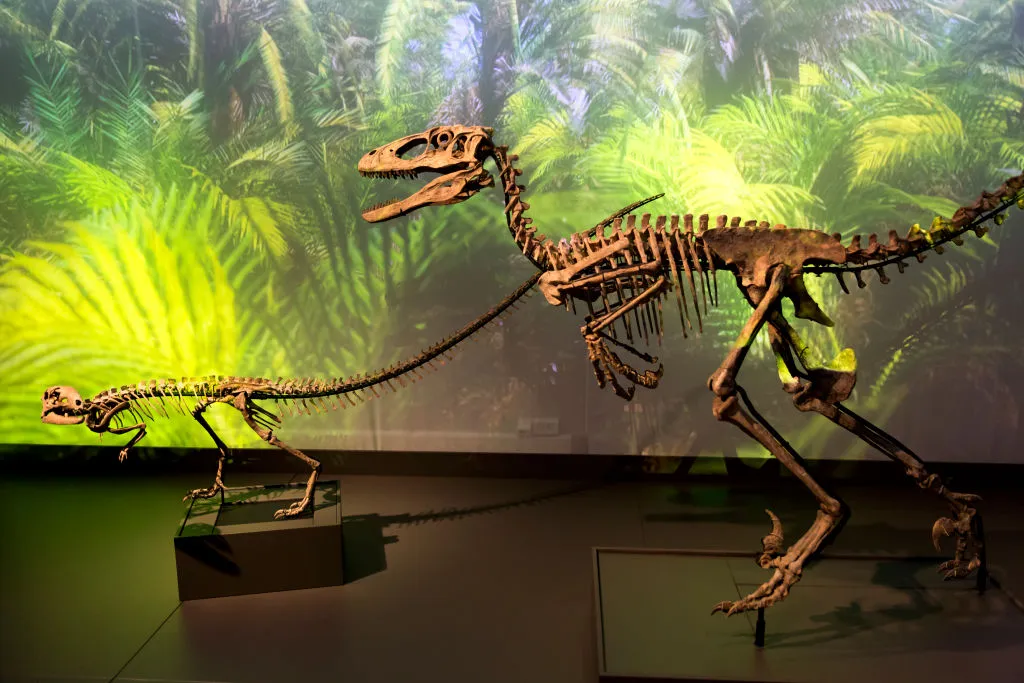
Bones are probably the most familiar of type of fossil to many of us, especially if you’ve ever visited a natural history museum – where dinosaur and other prehistoric animal skeletons tower over you. Albeit that many of the display fossil skeletons are actually replicas.
Ammonites
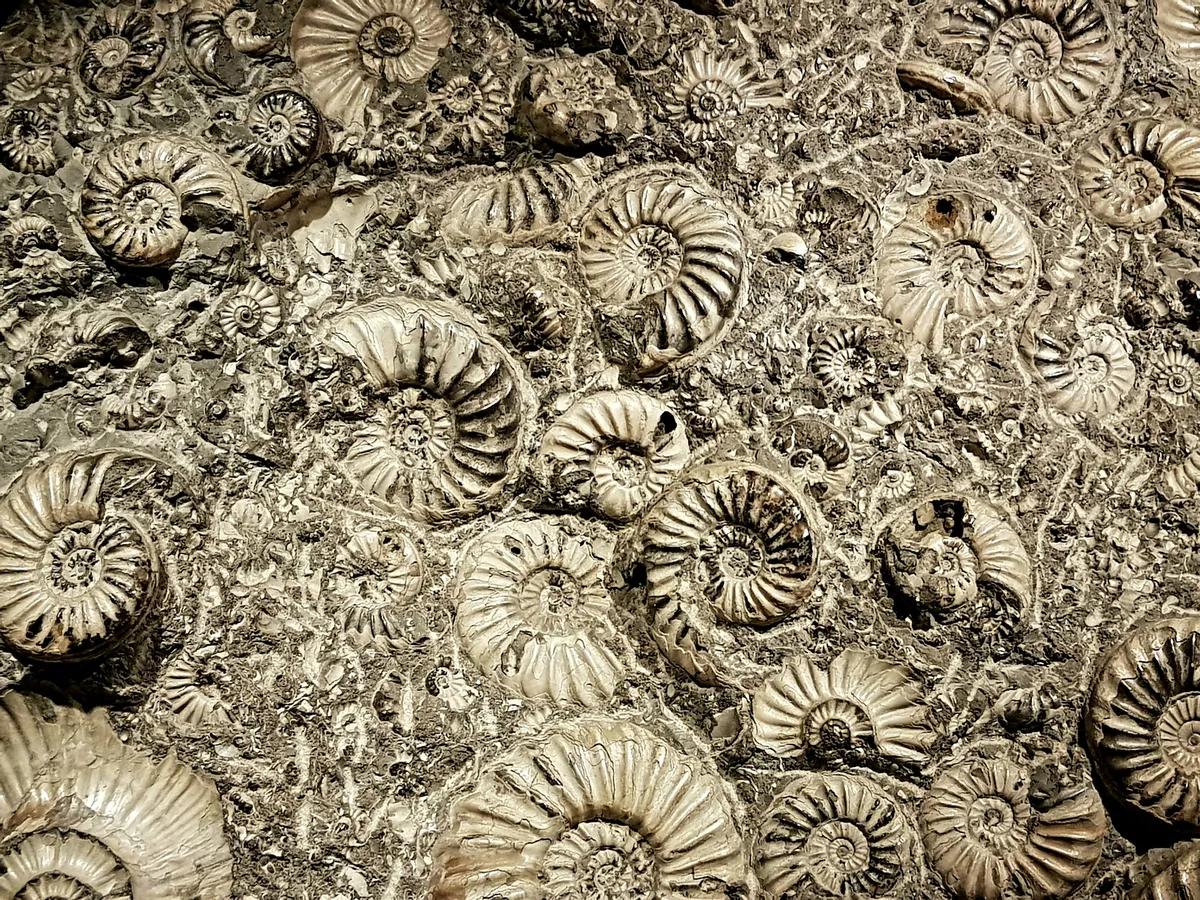
Ammonite fossils are one of the most recognisable fossils, consisting of a fossilised spiral shell. They were once thought to be coiled-up snakes that had been turned into stone, and were called snakestones.
However ammonites were actually shelled molluscs that lived in the sea, specifically cephalopods. Extant cephalopods include squids, octopuses, cuttlefish and nautilus. Ammonites went extinct about 66 million years ago, it’s thought that most of the them died out during the fifth mass extinction (also known as the Cretaceous-Tertiary extinction) at the end of the Cretaceous Period that killed off the non-avian dinosaurs.
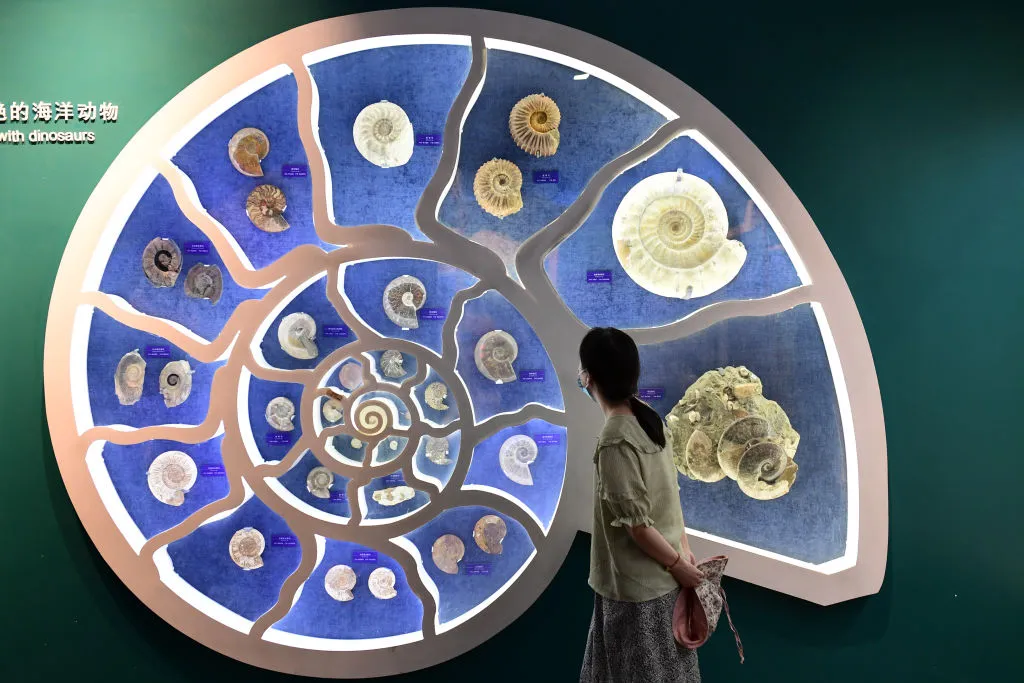
Ammonite fossils can be found around the world, and can vary in size. The largest known fossil was of Parapuzosia seppenradensis and measured 1.8 metres in diameter. However, it was incomplete and a completed specimen could measure p to 3.5 metres in diameter.
Ammonites are not always circular. For example, Nipponites mirabilis ammonites grew strange and unusually shaped coils.
Belemnites
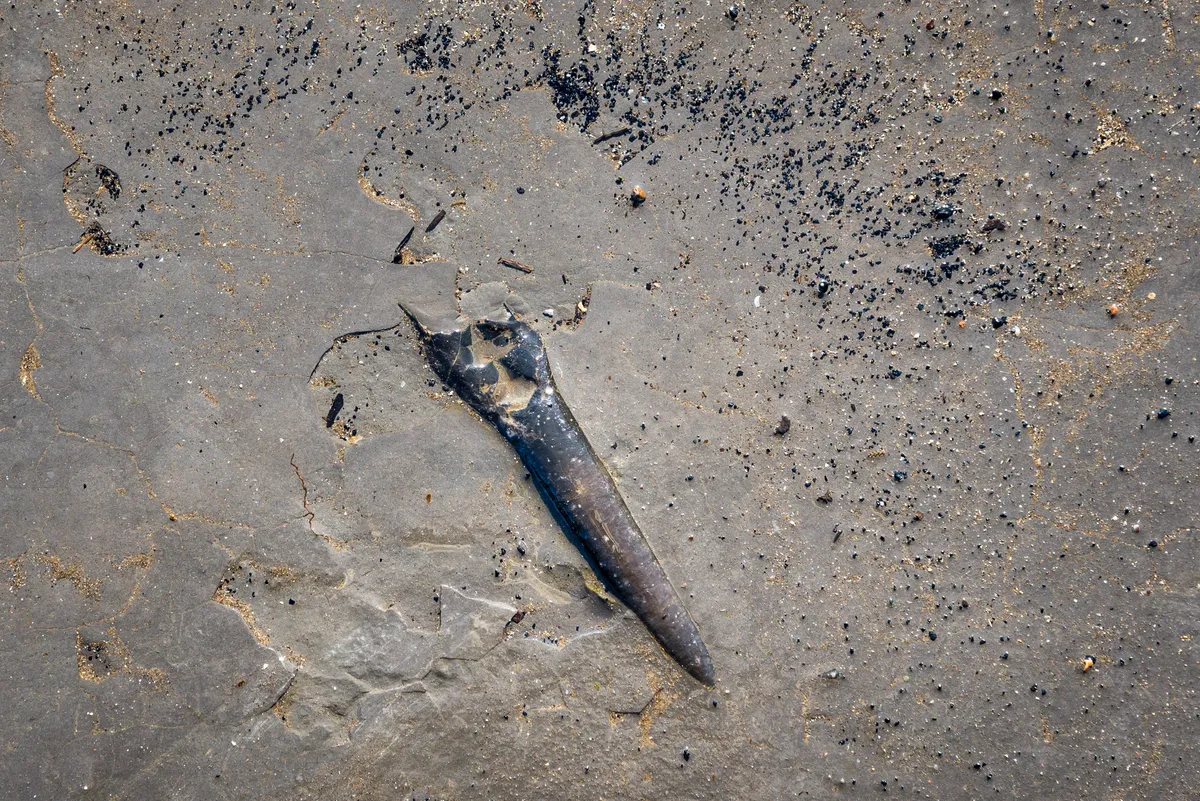
Belemnites were also a type of mollusc within the Cephalopoda class. They looked similar to our extant squids, but had an hard internal skeleton. They lived between the Late Triassic and Late Cretaceous.
The most common fossilised part of a belemnites is the pointed guard or rostrum, which formed the rear part of a belemnite’s cone.
The Greek work ‘belemnon’ means dart or javelin, and the shape of the fossilised rostrum led to the name ‘belemnites’.
Belemnites started to decline during the Jurassic period, as they became outcompeted by squid and octopus, and became extinct during the fifth extinction event.
Crinoids
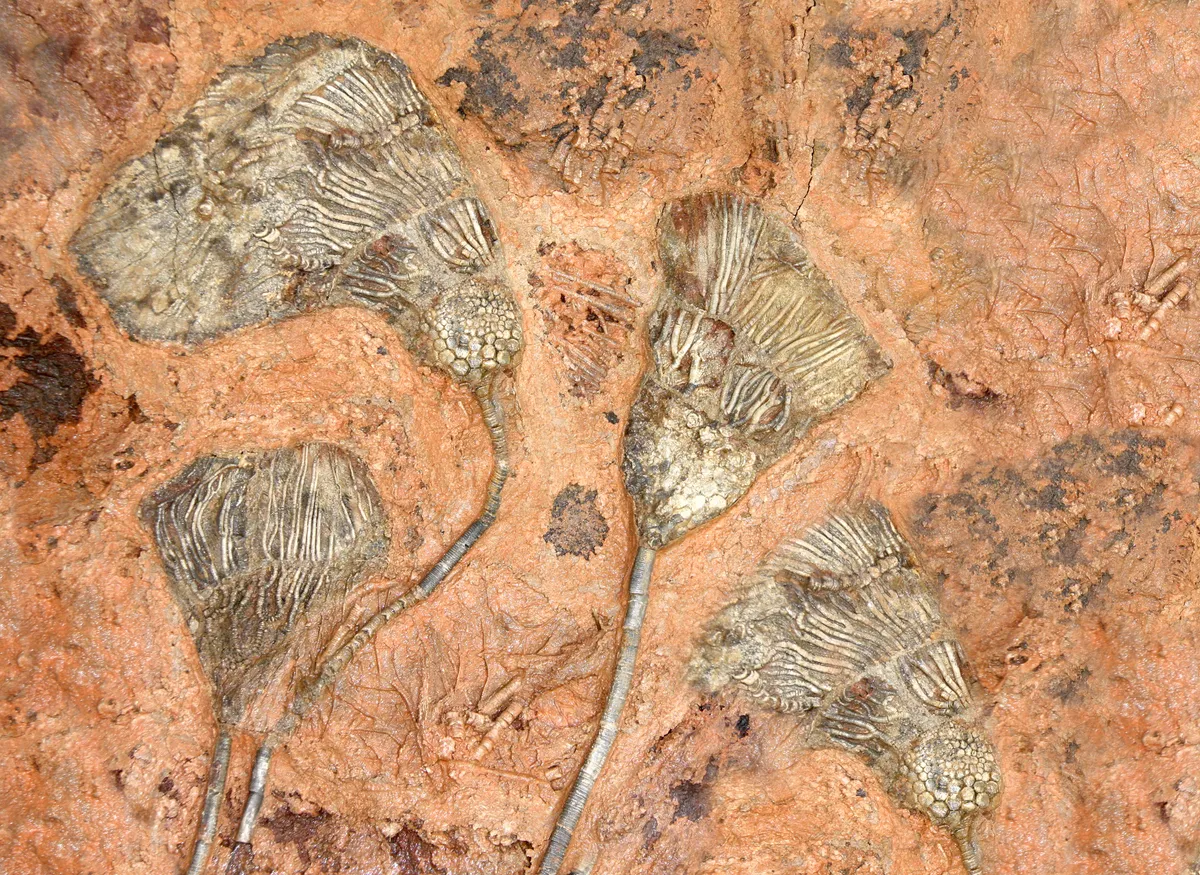
Fossilised crinoids look a lot like plants, but they were actually marine animals belonging to the echinoderms – a phylum that also includes starfish, brittle stars, sea urchins and sea cucumbers. Not all crinoids became extinct, with those existing today known as sea lilies or feather stars.
Coprolites
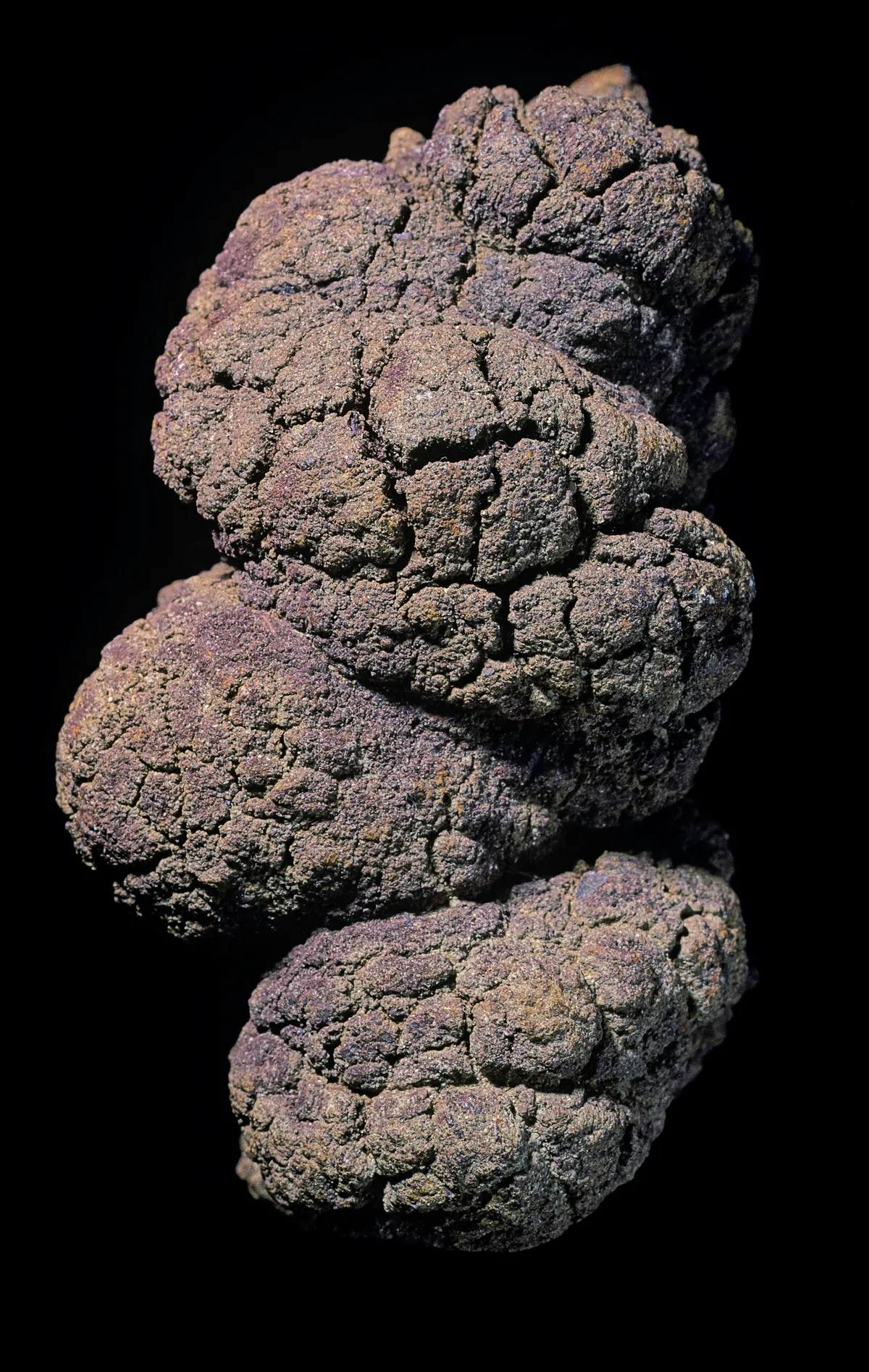
There is a memorable scene in the film Jurassic Park where Dr Sattler (actor Laura Dern) plunges her arms into a huge pile of dinosaur droppings to look for the digested remains of a toxic plant. Fortunately, we don’t need to don rubber gloves or hold our noses to explore the diet of ancient creatures in the real world.
Instead, palaeontologists study coprolites, fossilised faeces that form when droppings are buried and preserved under layers of sediments. Mary Anning was one of the first people who examined coprolites and she discovered that these coiled fossils contained fragments of bone, shell and even fish scales illustrating the diets of ancient creatures.
Coprolites were called bezoar stones and fossil fir cones by many people, but the theologian, geologist and palaeontologist William Buckland examined the ones found by Mary Anning and came to the conclusion that they were fossilised faeces and suggested the name ‘coprolites’ for them.
In the 19th century, coprolites were ground down and used as fertiliser to enhance crop production after the Napoleonic Wars. When a rich seam of faecal fossils was discovered in Cambridge, it would lead to a frenzy of quarrying known as the Cambridge Coprolite Mining Rush.
Coprolites are studied by scientists to learn about the diet and behaviour of prehistoric animals.
Amber
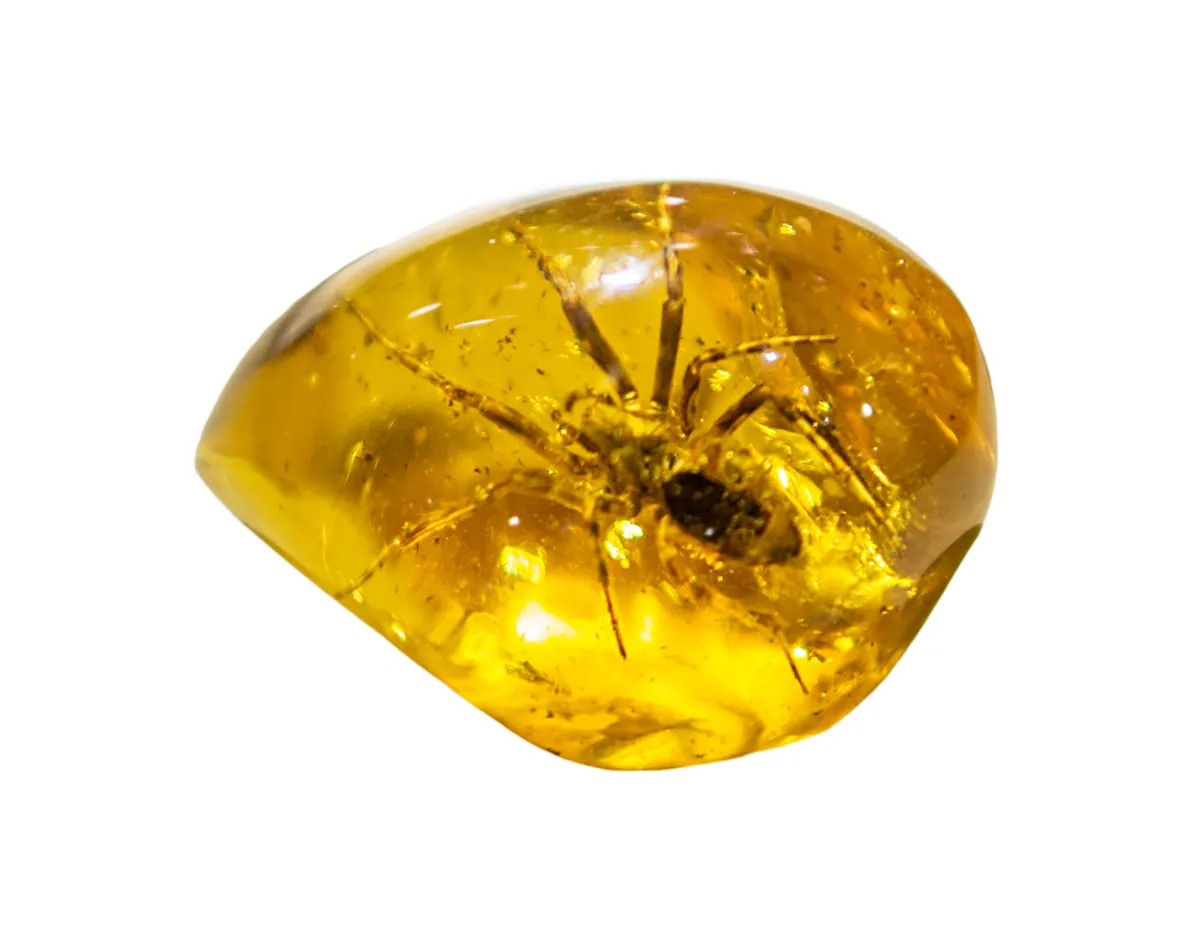
Amber is fossilised resin, a liquid produced by plants (mostly trees) and released in response to an injury. Occasionally, this released liquid traps and preserves small invertebrates such as spiders and flies – and in the case of Jurassic Park, mosquitoes.
Best places to look for fossils in the UK
Jurassic Coast, Dorset and Devon, England
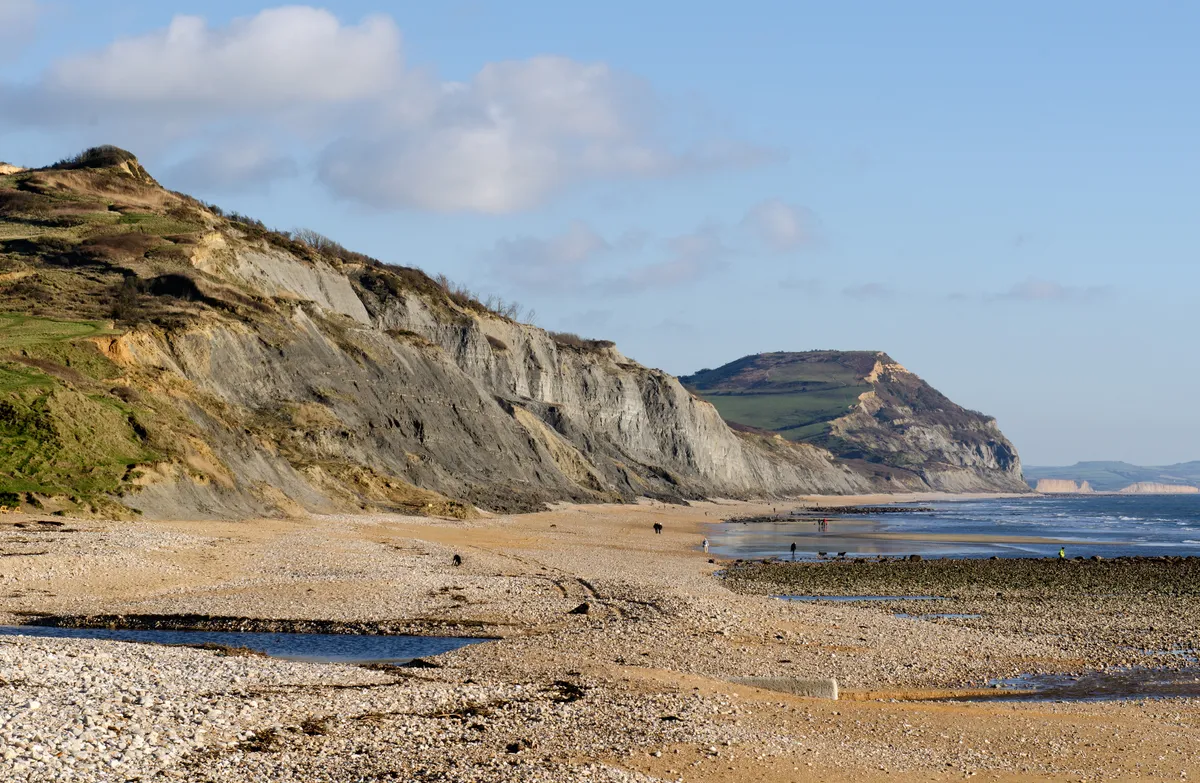
The rocks of the Jurassic Coast record an incredible 185 million years of Earth’s history, charting a myriad of ancient environments from arid deserts, deep murky seas to dinosaur infested swamps.
Locked inside the cliffs are fossils that provide valuable insights into these lost worlds. The richness and diversity of life in these ancient ecosystems combined with exceptional preservation, makes this coastline one of the best places in the world for fossil hunting. The abundance of fossils found on the beaches is also due to coastal erosion where incoming waves batter the cliffs, releasing all manner of geological treasures to be discovered.
Mary Anning, a Victorian palaeontologist who lived in Lyme Regis, spent her life fossil hunting along these beaches. Her discoveries such as a partial skeleton of a Dimorphodon (flying reptile) and marine reptiles such as Plesiosaurs and Ichthyosaurs would transform our understanding of ancient life on Earth.
Lyme Regis hosts a free Fossil Festival each spring which includes live talks, guided talks and treasure hunts.
Runswick Bay, Yorkshire, England
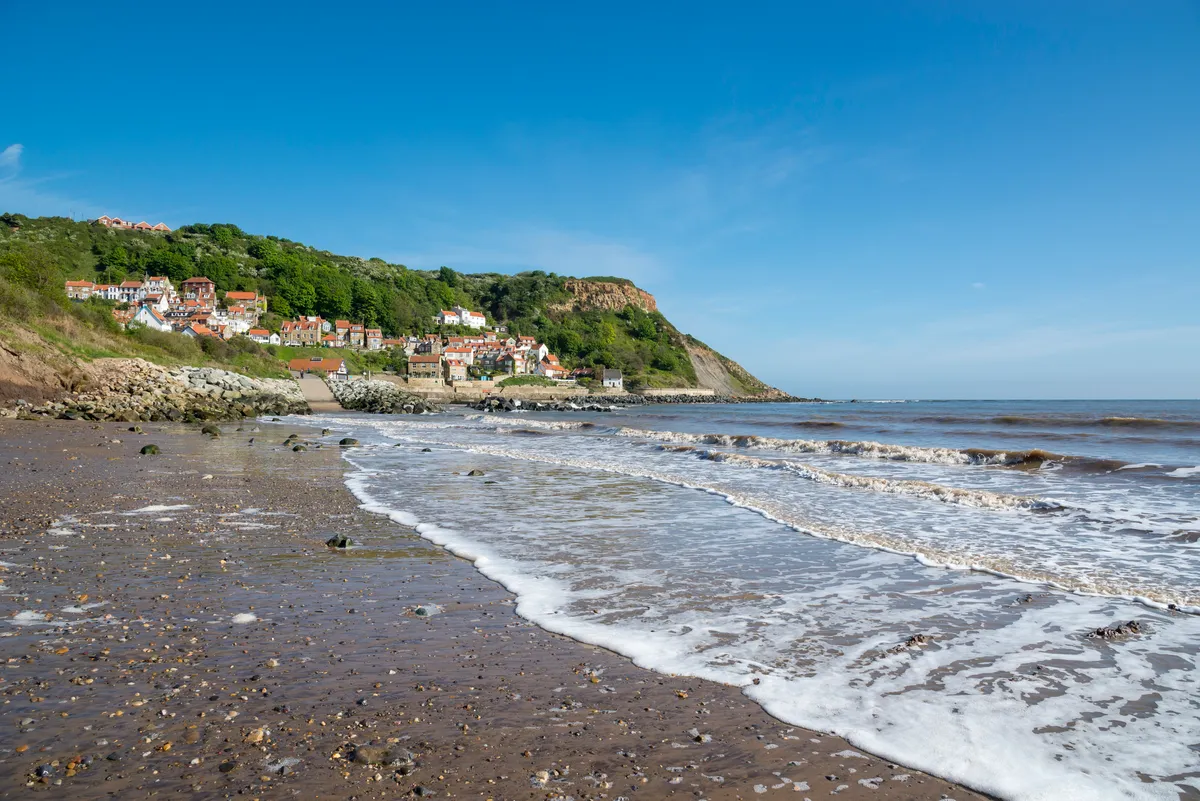
Runswick Bay near Whitby in Yorkshire is a good site for finding ammonites, belemnites and shells, and is particularly good for families looking to find fossils with easy access to the beach and nearby parking. Occasionally the remains of Pleistocene mammals are washed in here from the North Sea.
The bay is a site of special scientific interest (SSSI), and although it is ok to use hammers to crack open loose rocks, hammering the bedrock is not allowed.
As with all coastal locations, care must be taken with the tide times and there is a risk of being cut off, as well as danger from the cliffs.
Warden Point, Isle of Sheppey, England
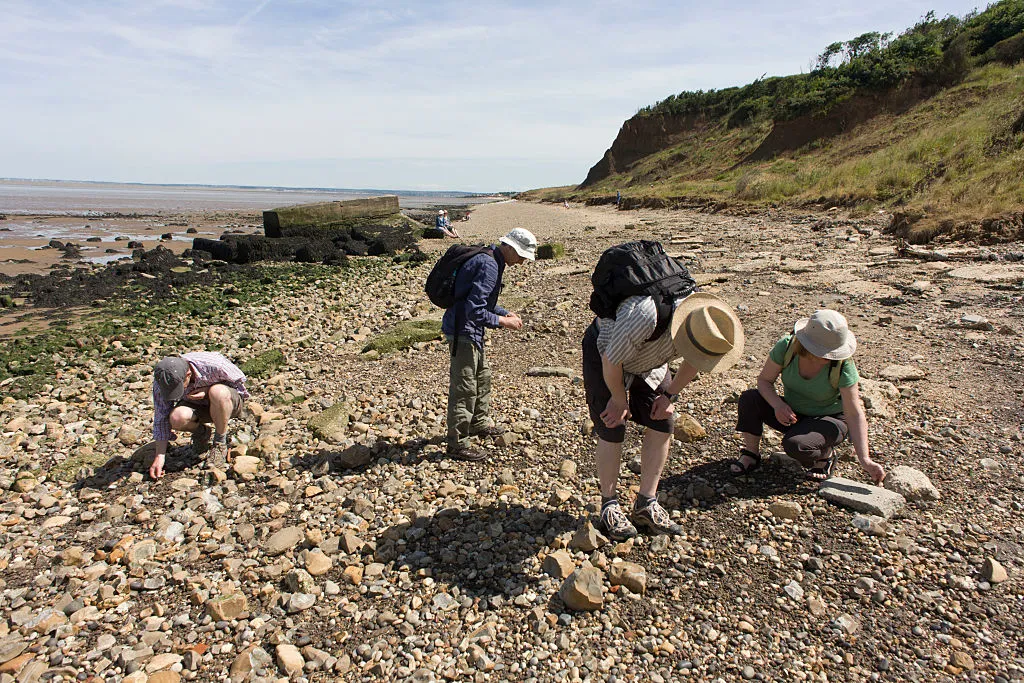
On the north-eastern coast of the Isle of Sheppey in Kent, the two-mile beach near the small village of Warden is a productive site for fossils from London Clay, including crabs, shark teeth, shells, bird skulls and more.
It’s ok to pick up loose fossils, but the site is a triple SSSI and digging in the cliff is not allowed. The tides, mud and cliffs mean that care must be taken at this site.
Isle of Skye, Scotland
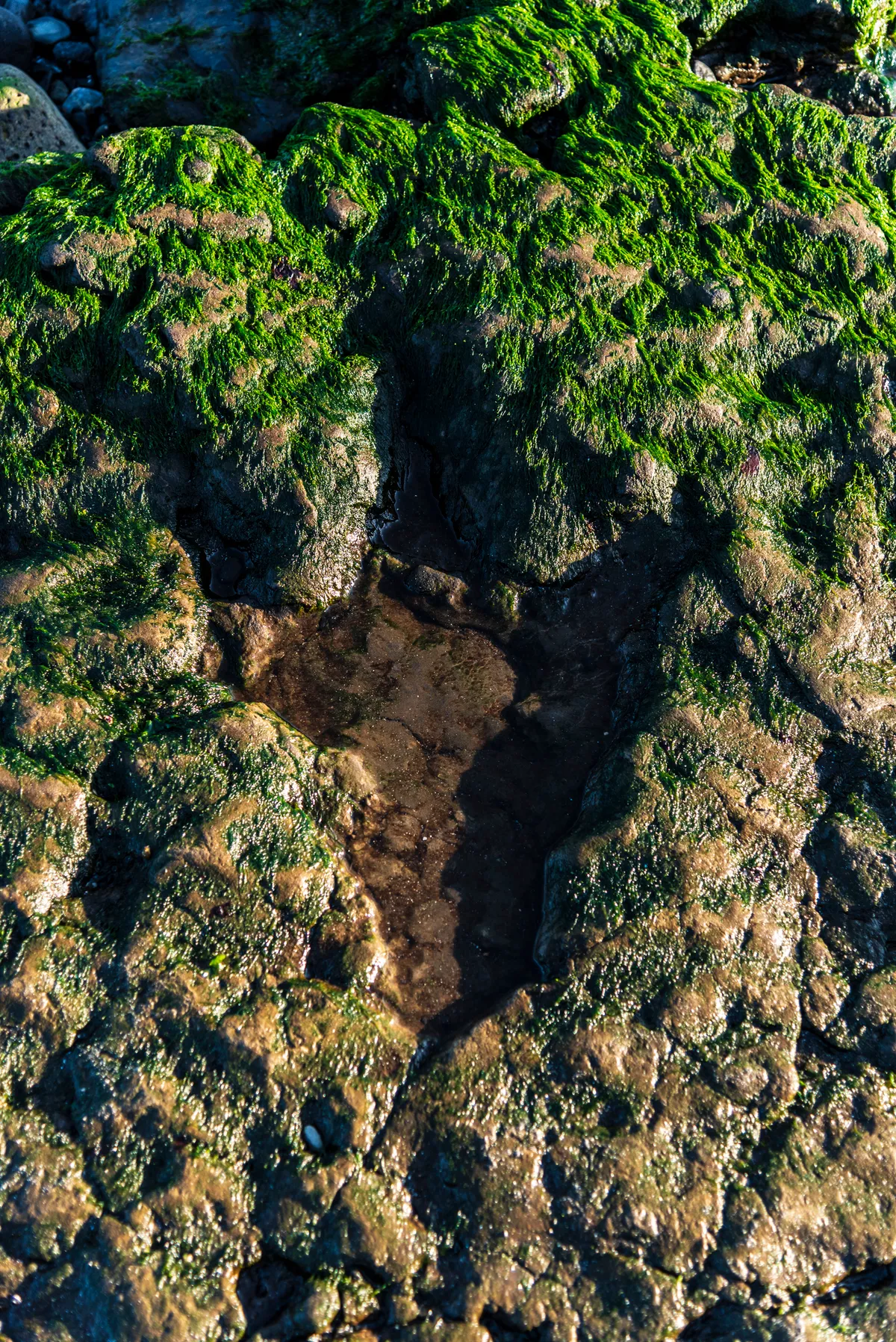
If you’re looking to step into the footsteps of dinosaurs, Isle of Skye has got some of these trace fossils thought they are sometimes obscured by sand or seaweed.
The An Corran beach has got some ornithopod footprints that are relatively easy to see, and Score Bay has sauropod footprints. Brother's Point is where the most recently discovered dinosaur footprints were found in 2020.
Visit Staffin Dinosaur Museum (open between April and October), which was established in in 1976, to learn about Skye’s dinosaur fossils.
Main image: Fossilised skeleton of an American Mastodon, an Ice Age relative of the elephant at the Natural History Museum in London, United Kingdom. © Mike Kemp/In Pictures/Getty
